Christa Faust's Blog, page 4
April 30, 2012
Johnny O’Clock and Johnny Allegro
A “Johnny on the Spot” double feature, one good and one not so good.
First, O’Clock.
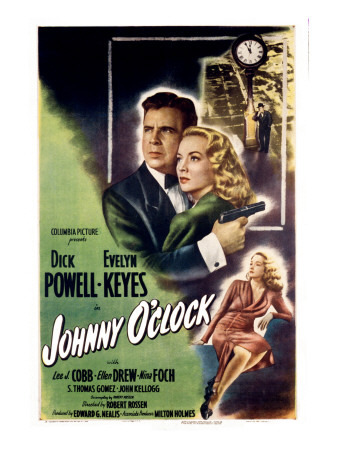
Dick Powell plays a swanky gangster whose convoluted love life, including his boss’ slutty wife, a heartbroken hatcheck girl and his jealous live-in “man,” (honest, that’s what he calls the surly twink he lives with) gets him mixed up in a murder.
Despite my personal issues with Powell’s upper lip, or lack thereof, he’s always aces and highly underrated. This movie is no exception. And Evelyn Keyes, who plays the sister of the murdered girl, is one of the grand dames of Film Noir.
We had strayed a ways with the last few double features, but this film brought us right back to Noir City with its snappy dialog, sharp suits and fallen women. Maybe I liked it more for hitting all my personal sweet spots than for its own objective merit, but you should check it out and see for yourself.
On the other hand, there’s Allegro.
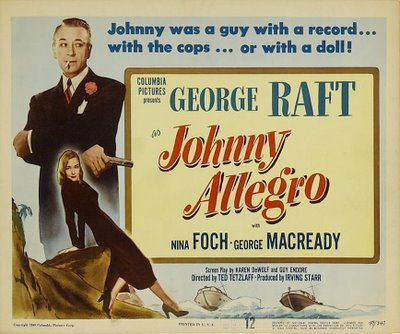
I (probably unfairly) refer to George Raft as the Shatner of Noir. I really want to like him, seeing as we grew up in the same neighborhood and all, but he’s just so dull and wooden and that girdle isn’t fooling anyone. Sexy Nina Foch makes up for him to some degree, as does the suave and sinister George MacReady, but they are all battling against a laughably preposterous script that doesn’t make a lick of sense.
Raft plays the title character, a gangster turned florist who tries to go straight but gets sucked back into the underworld by a hot dish in trouble, played by Foch. Off to a nice, noirish start, only on the way down he gets tapped by cops who use his criminal record to strong-arm him into working undercover for them. They set up this elaborate fake cop-shooting so that Foch will be forced to take Raft with her where ever she’s going. Which turns out to be a private tropical island owned by her counterfeiting and bow-hunting husband (MacReady.) There’s also some kind of lame-brained international angle with shifty Russians and a really ham-handed riff on The Most Dangerous Game.
This film is silly as hell, but had a few entertaining moments. I can’t recommend it, but I’m glad I saw it.
First, O’Clock.

Dick Powell plays a swanky gangster whose convoluted love life, including his boss’ slutty wife, a heartbroken hatcheck girl and his jealous live-in “man,” (honest, that’s what he calls the surly twink he lives with) gets him mixed up in a murder.
Despite my personal issues with Powell’s upper lip, or lack thereof, he’s always aces and highly underrated. This movie is no exception. And Evelyn Keyes, who plays the sister of the murdered girl, is one of the grand dames of Film Noir.
We had strayed a ways with the last few double features, but this film brought us right back to Noir City with its snappy dialog, sharp suits and fallen women. Maybe I liked it more for hitting all my personal sweet spots than for its own objective merit, but you should check it out and see for yourself.
On the other hand, there’s Allegro.

I (probably unfairly) refer to George Raft as the Shatner of Noir. I really want to like him, seeing as we grew up in the same neighborhood and all, but he’s just so dull and wooden and that girdle isn’t fooling anyone. Sexy Nina Foch makes up for him to some degree, as does the suave and sinister George MacReady, but they are all battling against a laughably preposterous script that doesn’t make a lick of sense.
Raft plays the title character, a gangster turned florist who tries to go straight but gets sucked back into the underworld by a hot dish in trouble, played by Foch. Off to a nice, noirish start, only on the way down he gets tapped by cops who use his criminal record to strong-arm him into working undercover for them. They set up this elaborate fake cop-shooting so that Foch will be forced to take Raft with her where ever she’s going. Which turns out to be a private tropical island owned by her counterfeiting and bow-hunting husband (MacReady.) There’s also some kind of lame-brained international angle with shifty Russians and a really ham-handed riff on The Most Dangerous Game.
This film is silly as hell, but had a few entertaining moments. I can’t recommend it, but I’m glad I saw it.
Published on April 30, 2012 22:42
April 29, 2012
Slaughter on Tenth Avenue and Edge of the City
A New York Waterfront double bill, one more New York than the other.
First, Slaughter on Tenth Avenue.
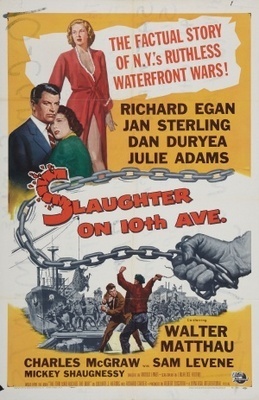
This movie should have been called “Slaughter in Long Beach,” but that’s okay. The lack of real NYC locations was more than made up for by the great gritty cast, including Dan Duryea, Walter Matthau, and a silver-haired Charles McGraw, along with tons of memorable bit parts like “Midget” the sawed-off alcoholic dock worker and the birdy little woman who thinks she’s the victim of mysterious death-rays. Not to mention the classy and still stunning Julie Adams, who was the special guest of the evening.
A longshoreman (Mickey Shaugnessy) is gunned down in the stairwell of his tenement apartment, but refuses to rat out the perps to the cops. A naïve young D.A. thinks he can break the waterfront code of silence and make a case against the shooters, but finds himself dragged down into the violent underworld of vigilante justice.
I’m generally not a fan of drawn-out courtroom scenes, but the trial in this movie is fantastic, with Dan Duryea as the merciless defense attorney and a snarling, hostile McGraw as a cop on the witness stand. I also loved the bit with the priest praying for forgiveness while handing out axe handles and rubber hoses to rioting strikers.
This film straddles the line between Noir and social commentary, but it never felt too heavy handed and was always entertaining. Definitely worth watching.
Julie Adams has been a guest before at Noir City, not to mention various screenings of The Creature From the Black Lagoon, and she is always gracious and lovely. Last night was no exception. I especially liked her story about the skin-tight leather pants she had to wear in the zillion and one low budget westerns she made early in her career. Apparently they were so tight that she was unable to get up on a horse and had to have a second identical but looser pair made for riding. Westerns notwithstanding, she’ll always be the Creature’s girlfriend to me.
Next, Edge of the City.
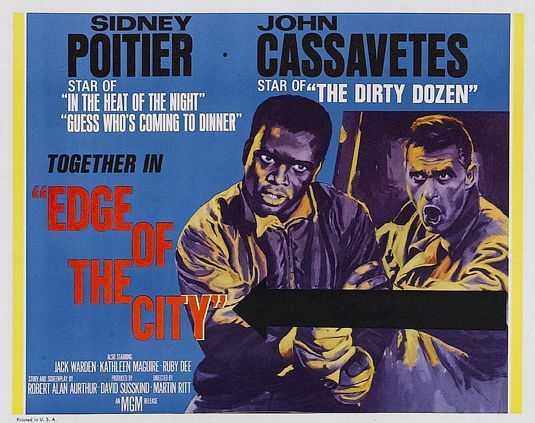
This movie really delivered on the vintage New York street scenes, shot on location in Harlem and along the waterfront. It probably falls more on the social commentary side of the fence, but still retains plenty of noirish flavor.
Troubled drifter Axel (Cassavetes) gets a job on the docks and is befriended by a fellow worker, the gregarious T.T. (Poitier.) But Axel has a dark secret that allows him to be taken advantage of by a racist bully (memorably played by Jack Warden) until the tense, simmering violence under the surface finally boils over into a spectacular cargo hook fight (!) to the death.
This is a story about a deep friendship between two men, possibly even too deep for the time, since there were apparently complaints from censors about the overt homosexual overtones of one scene in particular. Amazingly the director didn’t cave and the movie remains as originally intended.
It’s a little heavy on the 50s psychobabble but still well worth tracking down. Both Poitier and Cassvetes are at the top of their game in this one. And did I mention the cargo hook fight? Cargo hook fight! Seriously, go watch this now.
First, Slaughter on Tenth Avenue.

This movie should have been called “Slaughter in Long Beach,” but that’s okay. The lack of real NYC locations was more than made up for by the great gritty cast, including Dan Duryea, Walter Matthau, and a silver-haired Charles McGraw, along with tons of memorable bit parts like “Midget” the sawed-off alcoholic dock worker and the birdy little woman who thinks she’s the victim of mysterious death-rays. Not to mention the classy and still stunning Julie Adams, who was the special guest of the evening.
A longshoreman (Mickey Shaugnessy) is gunned down in the stairwell of his tenement apartment, but refuses to rat out the perps to the cops. A naïve young D.A. thinks he can break the waterfront code of silence and make a case against the shooters, but finds himself dragged down into the violent underworld of vigilante justice.
I’m generally not a fan of drawn-out courtroom scenes, but the trial in this movie is fantastic, with Dan Duryea as the merciless defense attorney and a snarling, hostile McGraw as a cop on the witness stand. I also loved the bit with the priest praying for forgiveness while handing out axe handles and rubber hoses to rioting strikers.
This film straddles the line between Noir and social commentary, but it never felt too heavy handed and was always entertaining. Definitely worth watching.
Julie Adams has been a guest before at Noir City, not to mention various screenings of The Creature From the Black Lagoon, and she is always gracious and lovely. Last night was no exception. I especially liked her story about the skin-tight leather pants she had to wear in the zillion and one low budget westerns she made early in her career. Apparently they were so tight that she was unable to get up on a horse and had to have a second identical but looser pair made for riding. Westerns notwithstanding, she’ll always be the Creature’s girlfriend to me.
Next, Edge of the City.

This movie really delivered on the vintage New York street scenes, shot on location in Harlem and along the waterfront. It probably falls more on the social commentary side of the fence, but still retains plenty of noirish flavor.
Troubled drifter Axel (Cassavetes) gets a job on the docks and is befriended by a fellow worker, the gregarious T.T. (Poitier.) But Axel has a dark secret that allows him to be taken advantage of by a racist bully (memorably played by Jack Warden) until the tense, simmering violence under the surface finally boils over into a spectacular cargo hook fight (!) to the death.
This is a story about a deep friendship between two men, possibly even too deep for the time, since there were apparently complaints from censors about the overt homosexual overtones of one scene in particular. Amazingly the director didn’t cave and the movie remains as originally intended.
It’s a little heavy on the 50s psychobabble but still well worth tracking down. Both Poitier and Cassvetes are at the top of their game in this one. And did I mention the cargo hook fight? Cargo hook fight! Seriously, go watch this now.
Published on April 29, 2012 15:45
April 28, 2012
Scene of the Crime and Reign of Terror
Before I get to the full write ups, I have to share a deeply traumatic experience from last night.
Witness: Hipster Charles McGraw!
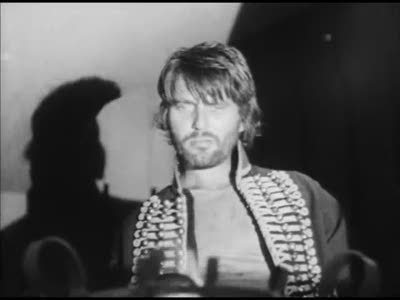
Anyone who follows this blog knows how much I love McGraw. I love him because he’s a man of his time, a quintessential Film Noir tough guy. Nothing like the current crop of soft-serve mama’s boys calling themselves actors these days. So seeing him like this in Reign of Terror, looking like he's getting ready to ride his fixie over to the Silver Lake Trader Joe’s to pick up some organic tofunaise, was hard to handle. No wonder he gets his ass kicked by children in this movie. I feel like I need to go back and watch Narrow Margin again to rinse this image out my eyes.
Okay, back to the movies.
First up Scene of the Crime.
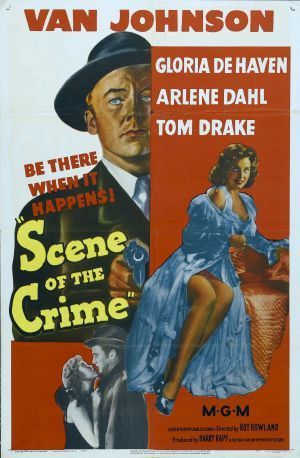
This is a low budget, no frills, meat-and-potatoes kind of flick. Van Johnson stars as a clean, honest cop whose partner is murdered outside a bookie joint with 1000 dollars in his pocket. Johnson has to catch the killer and prove that his late partner wasn’t crooked. Along the way he gets mixed up with a duplicitous stripper and a variety of shady, underworld characters, including a snitch named Sleeper, played by that night’s special guest Norman Lloyd.
Scene of the Crime isn’t bad, just mediocre. The plot seems unnecessarily convoluted and I didn’t like the big reveal about the killer using a black rubber glove to make his hand seem twisted. Still, it had its moments. I liked the stripper’s song about being a “lady” and her unexpected reversal at the end of the number where she converts her short sexy costume into a long gown. Lloyd’s character was memorable and delightfully off-kilter and got killed way too soon.
It also felt very long at 95 minutes and probably could have done with some trimming. I have a feeling there’s a decent 65 minute movie under all that padding.
In the break between films, host Alan Rode had a chat with the charming Norman Lloyd. He’s 97 now, and you’d never know it. He had to leave early, not because of his age, but because he had to be up early for a tennis game the next day! But before he left, he shared some great personal stories of working with Mann, Hitchcock and Orson Welles.
Next in line, (and also featuring Norman Lloyd) some French revolutionary Noir with Reign of Terror, also known as The Black Book.
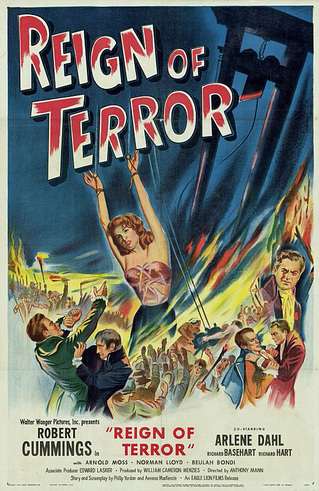
I tend to be kind of prejudiced against costume dramas. When I go to Noir City, I want fedoras, not powdered wigs. But hey, it’s Anthony Mann, so I was willing to put those prejudices aside. I’m glad I did, because I liked this one way more than I thought I would. Hipster Charles McGraw notwithstanding.
The plot revolves around a missing black book filled with the names of men marked for death. The book’s author is the legendary Robespierre, and finding it could prevent a political coup.
This movie’s got bondage and torture galore (!) plus plenty of snappy dialog, edge-of-your-seat suspense and some stellar performances, particularly Arnold Moss (the 1940’s version Adrian Brody) as the sleazy, double-dealing politician. Mann’s stylized shadowy imagery is gorgeous as always and the violence is raw, sweaty and visceral. Nothing about it is precious or stuffy the way you’d imagine a corset flick to be. I actually liked it much better than Scene of the Crime, which on the surface seems to be more up my (dark) alley.
So never mind the wigs, Reign of Terror is Film Noir at its finest. Mistress Christa says check it out.
Witness: Hipster Charles McGraw!

Anyone who follows this blog knows how much I love McGraw. I love him because he’s a man of his time, a quintessential Film Noir tough guy. Nothing like the current crop of soft-serve mama’s boys calling themselves actors these days. So seeing him like this in Reign of Terror, looking like he's getting ready to ride his fixie over to the Silver Lake Trader Joe’s to pick up some organic tofunaise, was hard to handle. No wonder he gets his ass kicked by children in this movie. I feel like I need to go back and watch Narrow Margin again to rinse this image out my eyes.
Okay, back to the movies.
First up Scene of the Crime.

This is a low budget, no frills, meat-and-potatoes kind of flick. Van Johnson stars as a clean, honest cop whose partner is murdered outside a bookie joint with 1000 dollars in his pocket. Johnson has to catch the killer and prove that his late partner wasn’t crooked. Along the way he gets mixed up with a duplicitous stripper and a variety of shady, underworld characters, including a snitch named Sleeper, played by that night’s special guest Norman Lloyd.
Scene of the Crime isn’t bad, just mediocre. The plot seems unnecessarily convoluted and I didn’t like the big reveal about the killer using a black rubber glove to make his hand seem twisted. Still, it had its moments. I liked the stripper’s song about being a “lady” and her unexpected reversal at the end of the number where she converts her short sexy costume into a long gown. Lloyd’s character was memorable and delightfully off-kilter and got killed way too soon.
It also felt very long at 95 minutes and probably could have done with some trimming. I have a feeling there’s a decent 65 minute movie under all that padding.
In the break between films, host Alan Rode had a chat with the charming Norman Lloyd. He’s 97 now, and you’d never know it. He had to leave early, not because of his age, but because he had to be up early for a tennis game the next day! But before he left, he shared some great personal stories of working with Mann, Hitchcock and Orson Welles.
Next in line, (and also featuring Norman Lloyd) some French revolutionary Noir with Reign of Terror, also known as The Black Book.

I tend to be kind of prejudiced against costume dramas. When I go to Noir City, I want fedoras, not powdered wigs. But hey, it’s Anthony Mann, so I was willing to put those prejudices aside. I’m glad I did, because I liked this one way more than I thought I would. Hipster Charles McGraw notwithstanding.
The plot revolves around a missing black book filled with the names of men marked for death. The book’s author is the legendary Robespierre, and finding it could prevent a political coup.
This movie’s got bondage and torture galore (!) plus plenty of snappy dialog, edge-of-your-seat suspense and some stellar performances, particularly Arnold Moss (the 1940’s version Adrian Brody) as the sleazy, double-dealing politician. Mann’s stylized shadowy imagery is gorgeous as always and the violence is raw, sweaty and visceral. Nothing about it is precious or stuffy the way you’d imagine a corset flick to be. I actually liked it much better than Scene of the Crime, which on the surface seems to be more up my (dark) alley.
So never mind the wigs, Reign of Terror is Film Noir at its finest. Mistress Christa says check it out.
Published on April 28, 2012 16:59
April 27, 2012
Caged and Big House USA
”File out, you tramps!”
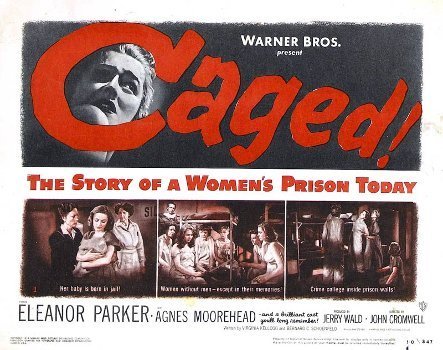
I absolutely love this movie. As host Alan Rode mentioned in his intro, this film tends to get unfairly categorized as “camp,” often lumped in with cheesy brain-dead sexploitation flicks because of it’s subject matter; women in prison. But this is actually a bleak, brutal and hard-hitting film that doesn’t pull any punches. The women are not tarted-up bimbos rolling around in cute little lingerie catfights. They are sweaty, raw-faced and desperate, shot with harsh, unflattering realism. Eleanor Parker is deeply sympathetic and completely believable as a pregnant teenage widow who enters a terrified child and leaves a hardened criminal. And Noir City favorite Hope Emerson is unforgettable as the beefy, sadistic matron.

The scene where she describes a hot date to the inmates, taunting them with her sexy descriptions of what they can never have, is deliciously twisted.
Highly recommended, with the caveat that it does feature kitten death. A brilliant, darkly ironic scene and not at all gratuitous, but soft-hearted animal lovers upset by such things might want to skip it.
Big House USA, on the other hand, was kind of a let down.
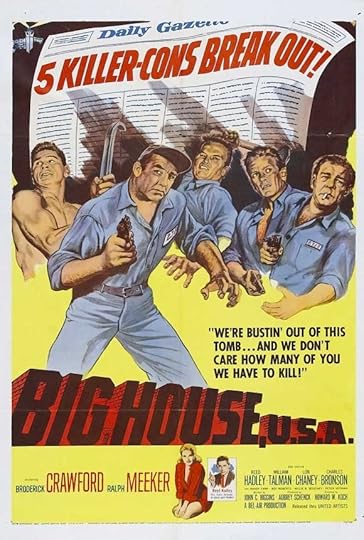
A young boy’s kidnapping goes wrong and sends a cold-hearted con man (Ralph Meeker) to the aforementioned Big House, where he shares a cell with Broderick Crawford, William Tallman, Charles Bronson and Lon Chaney Jr. (!!!) Of course, they have a plan to bust out and decide to kidnap the kidnapper in order to get their hands on his hidden ransom money.
Sounds awesome, right? How can this premise possibly go wrong?
By spending way too much screen time on the cops and feds solving the crime, complete with snooze-inducing voice-over, and not nearly enough in the stir.
Don’t get me wrong, there’s about 30 brilliant minutes to this film. Every minute that Broderick Crawford is on camera. Plus, lots of shirtless Charles Bronson.
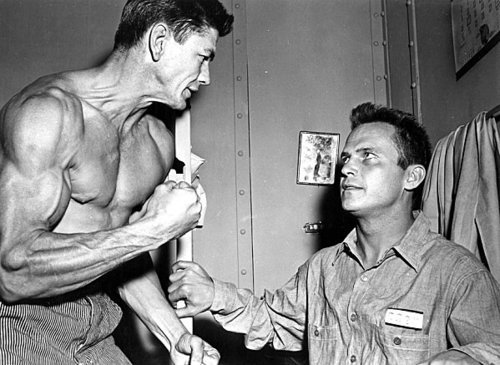
This is also an amazingly violent film for the time, including (SPOILERS!!!) the on-screen death of the little boy and a scene where the cons burn a dead guy’s face off to hide his identity. But if this were my movie, I would have started with Meeker walking into the prison and stayed with the cons the whole time.
However, this one is definitely worth seeing just for the Broderick Crawford scenes. Plus, it's a must see for aficionados of Bronson’s pouty nipples, which get more screen time than Felicia Farr.
Tonight, Scene of the Crime, with special guest Normal Lloyd, and Reign of Terror.

I absolutely love this movie. As host Alan Rode mentioned in his intro, this film tends to get unfairly categorized as “camp,” often lumped in with cheesy brain-dead sexploitation flicks because of it’s subject matter; women in prison. But this is actually a bleak, brutal and hard-hitting film that doesn’t pull any punches. The women are not tarted-up bimbos rolling around in cute little lingerie catfights. They are sweaty, raw-faced and desperate, shot with harsh, unflattering realism. Eleanor Parker is deeply sympathetic and completely believable as a pregnant teenage widow who enters a terrified child and leaves a hardened criminal. And Noir City favorite Hope Emerson is unforgettable as the beefy, sadistic matron.

The scene where she describes a hot date to the inmates, taunting them with her sexy descriptions of what they can never have, is deliciously twisted.
Highly recommended, with the caveat that it does feature kitten death. A brilliant, darkly ironic scene and not at all gratuitous, but soft-hearted animal lovers upset by such things might want to skip it.
Big House USA, on the other hand, was kind of a let down.

A young boy’s kidnapping goes wrong and sends a cold-hearted con man (Ralph Meeker) to the aforementioned Big House, where he shares a cell with Broderick Crawford, William Tallman, Charles Bronson and Lon Chaney Jr. (!!!) Of course, they have a plan to bust out and decide to kidnap the kidnapper in order to get their hands on his hidden ransom money.
Sounds awesome, right? How can this premise possibly go wrong?
By spending way too much screen time on the cops and feds solving the crime, complete with snooze-inducing voice-over, and not nearly enough in the stir.
Don’t get me wrong, there’s about 30 brilliant minutes to this film. Every minute that Broderick Crawford is on camera. Plus, lots of shirtless Charles Bronson.

This is also an amazingly violent film for the time, including (SPOILERS!!!) the on-screen death of the little boy and a scene where the cons burn a dead guy’s face off to hide his identity. But if this were my movie, I would have started with Meeker walking into the prison and stayed with the cons the whole time.
However, this one is definitely worth seeing just for the Broderick Crawford scenes. Plus, it's a must see for aficionados of Bronson’s pouty nipples, which get more screen time than Felicia Farr.
Tonight, Scene of the Crime, with special guest Normal Lloyd, and Reign of Terror.
Published on April 27, 2012 16:38
April 26, 2012
T-Men and Strange Impersonation

I’ve seen T-Men before. In fact it may have been the first Film Noir I ever saw. If not the very first, then one of the first for sure.
But any chance to see hot, sweaty, nearly naked Charles McGraw on the big screen is worth taking.

A pair of US Treasury agents, played by Dennis O’Keefe and Alfred Ryder, go undercover to infiltrate a counterfeiting ring. “Going undercover” in this film seems to mean spending a lot of time in steam rooms dressed in nothing but towels. Not that I’m complaining. O’Keefe’s famous line; “Have you ever spent ten days in a Turkish bath looking for a man?" still cracks me up every time.
T-Men falls into the category of “DocuNoir.” You know, ripped from the headlines, heavy on the anti-crime propaganda, dull, authoritative narration. Seems like strange bedfellows with Mann’s stylish, shadow-heavy visuals, but it works. And did I mention Charles McGraw?
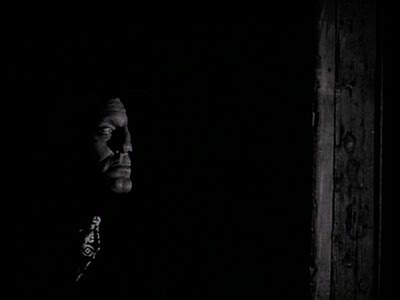
McGraw is at his bad-ass best as a heavy named Moxie who likes breaking fingers. If there was ever a face made to be half in shadow, it’s McGraw’s. Best profile in Noir City. If you haven’t seen T-Men yet, go watch it now. I’ll wait.
Next up, another Anthony Mann film; Strange Impersonation.
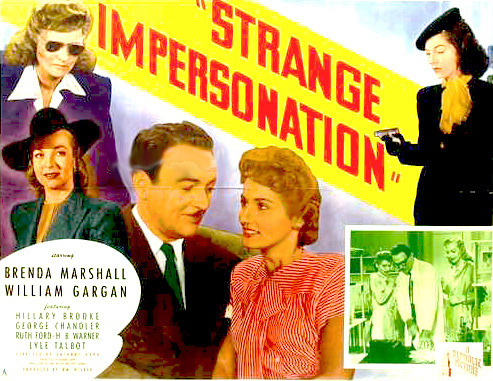
This movie gets on the express bus to bizarroville in the first reel and doesn’t let up. I loved every minute of it. I don’t even know how to begin recounting the delirious plot, and I don’t want to give too much away, but here’s the set up:
A lady scientist (!) invents a new form of anesthesia, which she decides to test on herself at home.
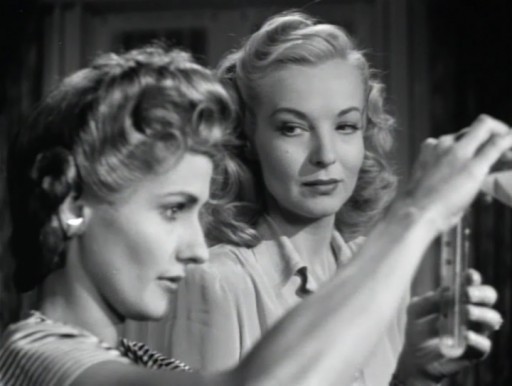
On the way there, she hits a drunk pedestrian with her car. The woman is unhurt at the time, but after being approached by an ambulance chasing lawyer, she starts to get dollar signs in her eyes. Meanwhile the anesthesia test goes haywire when the scientist’s best friend (statuesque blond goddess Hillary Brooke) betrays her. The scientist winds up hospitalized and severely disfigured while the foxy friend sets to work stealing her tepid, chinless fiancé, played by William Gargan. (Isn’t Gargan one of the monsters that fights Godzilla?)

Of all the wild, outlandish plot twists in this film, the one I had the hardest time believing is the idea that any woman would ever want to fuck this guy, let alone murder another woman to be with him.
That aside, Strange Impersonation was an absolute hoot from start to finish. It’s not a great film, probably not even a good film, but I loved it. Unironically.
Tonight, a prison double bill of Caged and Big House USA.
Published on April 26, 2012 16:30
April 23, 2012
Phantom Lady, Black Angel and The Window
Last night’s big Cornell Woolrich triple feature turned into a quadruple feature when Eddie Muller arranged to rescreen Suddenly. Good thing I was dressed down to go the distance and brought along a picnic dinner
First in line was Phantom Lady, one of my personal faves.
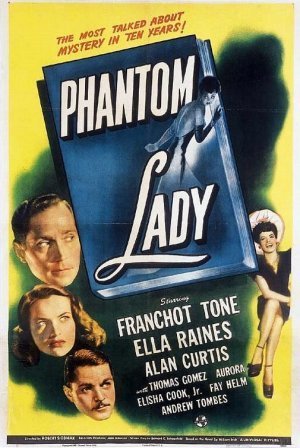
Being a bird nerd, covered with bird tattoos and obsessed with bird motifs in clothing and jewelry, I covet the huge, gaudy “phantom hat” in this film.

I also love the dress the titular character paired with this hat, which features a sequined double bird appliqué on the left shoulder. If anyone could rock this look today, I like to think it would be me.
Fashion aside, this is movie is a knockout. Based on a classic novel by Cornell Woolrich, directed by legendary Noir stylist Robert Siodmak and starring luminous beauty Ella Raines and scenery-chomping Franchot Tone as a twitchy, murderous sculptor.

A despondent everyman (Alan Curtis) gets stood up on his anniversary and ends up spending the evening with a mysterious lonely woman. When he goes home, he finds his wife strangled and himself charged with her murder. His plucky, loyal secretary (Raines) vows to do whatever it takes to prove him innocent.
The unforgettable basement jazz sequence with Elisha Cook Jr as a hopped-up drummer and trampy “hep kitten” Ella egging him on in a sweaty, manic frenzy of sexual innuendo was even better on the big screen.

I also love Carmen Miranda’s feisty little sister Aurora as the sexy, hot-tempered dancer who’s too vain to admit that another woman was wearing the same hat.
This film does have its flaws, most notably the awkward censor-driven explanation of Tone’s abrupt, not-really suicide at the end. Apparently it was forbidden for a murderer to commit suicide to evade justice, so they had to tack on a preposterous line about him accidentally falling from the balcony while trying to escape. Yeah, right after he “accidentally” flung himself through the plate glass window.
But flaws aside, this film is still one of my personal faves. Mistress Christa says check it out.
On to Black Angel.
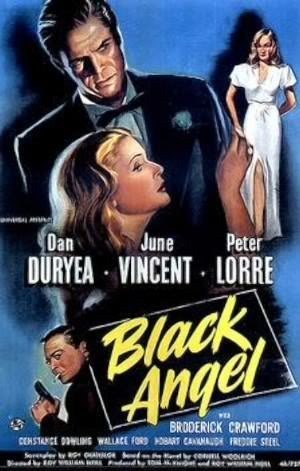
Another Woolrich classic, packed with Noir City favorites like Dan Duryea, Peter Lorre and Broderick Crawford. The only misstep in the casting of this film is the wooden, mannish and deeply unappealing June Vincent.

Unfortunate, since her character is so central to the story.
An alcoholic piano player (Duryea) and a night club singer (Vincent) discover that their respective spouses were having an affair after the songbird’s husband is arrested for the murder of the pianist’s estranged wife. The two of them team up to find the real killer and the pianist ends up falling for the singer. Which was pretty hard to believe, considering that he was originally married to Constance Dowling.

While not as stylish as Phantom Lady, this one is a fun ride with lots of classic twists and turns. I loved Lorre as the surprisingly sympathetic aging gangster turned night club owner. His snappy line (to his hired muscle) “I don’t try to throw punches and you don’t try to think” got a big pop from the audience.
Last in the Woolrich triple feature was The Window.
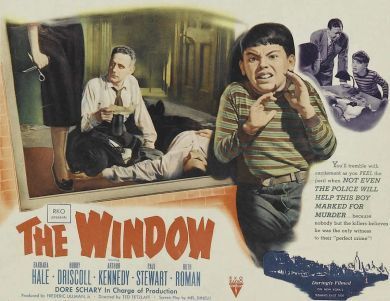
Based on The Boy Who Cried Wolf, this film follows an inner city kid who witnesses a murder and can’t get anyone to believe him.
Now all you Faustketeers know I’m not a big fan of kids in real life. As a result, I find most kid-actors kind of creepy, always hamming it up and mugging for the camera. Even though Bobby Driscoll won a special Oscar for his performance in this film, I found it a bit too over-the-top in that standard kid-actor way. I wasn’t the only one who cheered when Noir City heavy Paul Stewart punched him in the face and knocked him out. Your mileage my vary.
My own personal prejudice aside, there’s lots to love in this movie. For one thing, it’s shot on location in and around the tenements of New York City, which brought back lots of memories of my own childhood playing in abandoned buildings, on fire-escapes and roof tops, also known as Tar Beach. Paul Stewart and Ruth Roman are dynamite as a murderous married couple and the suspense never lets up. Plus it was a beautifully restored 35 mm print funded by The Film Noir Foundation. Unquestionably worth watching.
As if this wasn’t enough Noir for one night, the Czar was able to arrange a do-over for the digital print of Suddenly.
The problem with the previous night’s screening happened because, although all the projection settings had been calibrated in advance and were ready to go, someone turned the machine off during the first feature. When it was turned back on, all the default settings were restored and the person who knew how to reset them had already gone home.
This time around there were no such problems and we got to see the print the way it was supposed to be shown. Clear, crisp and near-perfect. While it could be argued that the blacks were not as rich and deep as 35mm film, a simple meat-and-potatoes kind of film like Suddenly didn’t suffer from that subtle flatness the way a flashier more high-contrast film like Phantom Lady might have. The image quality was so high, that I found myself mesmerized by the scars on Sinatra’s neck. You just can’t take your eyes off him. Every second that he’s on screen he owns it completely. I enjoyed his performance even more the second time around.
There was one glitch that remained, an odd jump when the grandfather gets up from the couch. Missing frames maybe, but hardly a deal-breaker. I’ll always prefer real film, but I can live with this. I’d much rather see a digital print on the big screen than watch a muddy, half-assed transfer on YouTube. Or worse, not see it at all.
If this is the future of Noir City, then you can count me in.
First in line was Phantom Lady, one of my personal faves.

Being a bird nerd, covered with bird tattoos and obsessed with bird motifs in clothing and jewelry, I covet the huge, gaudy “phantom hat” in this film.

I also love the dress the titular character paired with this hat, which features a sequined double bird appliqué on the left shoulder. If anyone could rock this look today, I like to think it would be me.
Fashion aside, this is movie is a knockout. Based on a classic novel by Cornell Woolrich, directed by legendary Noir stylist Robert Siodmak and starring luminous beauty Ella Raines and scenery-chomping Franchot Tone as a twitchy, murderous sculptor.

A despondent everyman (Alan Curtis) gets stood up on his anniversary and ends up spending the evening with a mysterious lonely woman. When he goes home, he finds his wife strangled and himself charged with her murder. His plucky, loyal secretary (Raines) vows to do whatever it takes to prove him innocent.
The unforgettable basement jazz sequence with Elisha Cook Jr as a hopped-up drummer and trampy “hep kitten” Ella egging him on in a sweaty, manic frenzy of sexual innuendo was even better on the big screen.

I also love Carmen Miranda’s feisty little sister Aurora as the sexy, hot-tempered dancer who’s too vain to admit that another woman was wearing the same hat.
This film does have its flaws, most notably the awkward censor-driven explanation of Tone’s abrupt, not-really suicide at the end. Apparently it was forbidden for a murderer to commit suicide to evade justice, so they had to tack on a preposterous line about him accidentally falling from the balcony while trying to escape. Yeah, right after he “accidentally” flung himself through the plate glass window.
But flaws aside, this film is still one of my personal faves. Mistress Christa says check it out.
On to Black Angel.

Another Woolrich classic, packed with Noir City favorites like Dan Duryea, Peter Lorre and Broderick Crawford. The only misstep in the casting of this film is the wooden, mannish and deeply unappealing June Vincent.

Unfortunate, since her character is so central to the story.
An alcoholic piano player (Duryea) and a night club singer (Vincent) discover that their respective spouses were having an affair after the songbird’s husband is arrested for the murder of the pianist’s estranged wife. The two of them team up to find the real killer and the pianist ends up falling for the singer. Which was pretty hard to believe, considering that he was originally married to Constance Dowling.

While not as stylish as Phantom Lady, this one is a fun ride with lots of classic twists and turns. I loved Lorre as the surprisingly sympathetic aging gangster turned night club owner. His snappy line (to his hired muscle) “I don’t try to throw punches and you don’t try to think” got a big pop from the audience.
Last in the Woolrich triple feature was The Window.

Based on The Boy Who Cried Wolf, this film follows an inner city kid who witnesses a murder and can’t get anyone to believe him.
Now all you Faustketeers know I’m not a big fan of kids in real life. As a result, I find most kid-actors kind of creepy, always hamming it up and mugging for the camera. Even though Bobby Driscoll won a special Oscar for his performance in this film, I found it a bit too over-the-top in that standard kid-actor way. I wasn’t the only one who cheered when Noir City heavy Paul Stewart punched him in the face and knocked him out. Your mileage my vary.
My own personal prejudice aside, there’s lots to love in this movie. For one thing, it’s shot on location in and around the tenements of New York City, which brought back lots of memories of my own childhood playing in abandoned buildings, on fire-escapes and roof tops, also known as Tar Beach. Paul Stewart and Ruth Roman are dynamite as a murderous married couple and the suspense never lets up. Plus it was a beautifully restored 35 mm print funded by The Film Noir Foundation. Unquestionably worth watching.
As if this wasn’t enough Noir for one night, the Czar was able to arrange a do-over for the digital print of Suddenly.
The problem with the previous night’s screening happened because, although all the projection settings had been calibrated in advance and were ready to go, someone turned the machine off during the first feature. When it was turned back on, all the default settings were restored and the person who knew how to reset them had already gone home.
This time around there were no such problems and we got to see the print the way it was supposed to be shown. Clear, crisp and near-perfect. While it could be argued that the blacks were not as rich and deep as 35mm film, a simple meat-and-potatoes kind of film like Suddenly didn’t suffer from that subtle flatness the way a flashier more high-contrast film like Phantom Lady might have. The image quality was so high, that I found myself mesmerized by the scars on Sinatra’s neck. You just can’t take your eyes off him. Every second that he’s on screen he owns it completely. I enjoyed his performance even more the second time around.
There was one glitch that remained, an odd jump when the grandfather gets up from the couch. Missing frames maybe, but hardly a deal-breaker. I’ll always prefer real film, but I can live with this. I’d much rather see a digital print on the big screen than watch a muddy, half-assed transfer on YouTube. Or worse, not see it at all.
If this is the future of Noir City, then you can count me in.
Published on April 23, 2012 13:17
April 22, 2012
Naked Alibi and Suddenly
Switching gears from pretty little Alan Ladd to the big, butch slab of manliness that is Sterling Hayden might have given me testosterone whiplash. In a good way, of course. Hayden isn’t much of an actor, but he’s still one of my all time Noir City favorites. I would watch him read the menu at a Waffle House. Throw fallen angel Gloria Grahame into the mix and I’m hooked.

Only in the 50s could you get away with a story like this. A story in which police brutality is actually a good thing.
Upstanding baker and family man Al Willis (Gene Barry) is picked up drunk with no ID and gets roughed up by a bunch of cops. He snaps and fights back, vowing revenge, but is eventually released when he sobers up and proof of his identity is provided.
Over the next few days, the cops who beat Willis start turning up dead. Hayden plays Joe Conroy, a detective who is deeply suspicious of the supposedly innocent baker. Conroy gets fired for harassing Willis, but he still can’t let it go and starts tailing the baker on his own time, hiring a private eye to help him out. Is Conroy a psycho cop with an irrational vendetta, or is he on to something?
Things get interesting when Willis tells his wife and infant daughter that he needs to get away for a few days to recover from the trauma of the beatings and harassment. Instead of going to Palm Springs or Pismo Beach, he heads for a shady border town and into the passionate arms of a bruised songbird, played by Gloria Grahame. Conroy follows him and complication ensue.
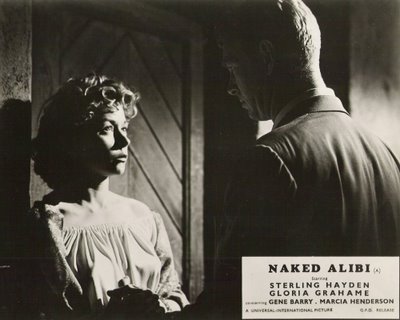
No real spoilers, but I will say this. Gene Barry is fantastic in this role, but like Jack Nicholson in The Shining, he comes off as an unhinged mad-dog killer from frame one. You don’t buy him as an innocent everyman for a second. But the truth is, you don’t have to in order to enjoy this film.
Oh, and did I mention that Gloria Grahame sings a torch song called “Ace in the Hole?” Seriously, you need this movie.
Next up was Suddenly, with Hayden and Frank Sinatra

Before I get into detail about the film itself, there was a pretty major catastrophe relating to this screening that I need to address.
Before this film started, Eddie Muller got up and gave an impassioned speech about the inevitable shift to digital projection and how, no matter how much we all love film, we have no choice but to roll with the change-over and start considering including digital prints in the Noir City festival. This film, Suddenly, has no 35mm print available. Because it’s in the public domain, there are dozens of lousy, muddy dupes out there, but a friend of Muller’s had meticulously crafted a beautiful, crisp digital copy from an original European fine grain print that, when projected correctly, should be indistinguishable from film.
Because this was the first digital print shown at Noir City, Muller asked us all to share our honest thoughts and opinions. But he wanted us to really watch the film and seriously consider the quality of the image, not just deliver a knee-jerk reaction against new technology. I was totally down, ready to open my mind and embrace the future.
The projection was bad.
I’m not familiar with the technology so I can’t say exactly what went wrong, but it’s my understanding that the problem was not with the print itself, but with the projection. As a result, every highlight was crawling with digital noise. It was almost unwatchable, but I hung in there for you, my three readers, so I could come back and report on the massacre.
The worst thing about this problem was that it was apparently fixable. Only the usual crackerjack projectionist was not there and they had some part-timer filling in who had absolutely no idea what to do. There’ve been several projection problems this year, mostly fumbled reel changes, but this was absolutely unacceptable. Off all the nights for something like this to go wrong, it had to be last night, when we were all supposed to be making this great leap into the future.
The real tragedy was that when you looked between the glimmering patches, you could see that the print was absolutely beautiful.
I could go on and on about this clusterfuck, and we did last night, closing a neighboring bar after the screening. But I’ll just move on to the film itself.
This was supposed to be Sterling Hayden’s night, but Sinatra stole the show in this film. He is absolutely brilliant as a psycho killer planning to assassinate the President. In fact, I think this may be his best role, or at least my personal favorite. I loved the way his sharp, angular face and lean, wiry street-dog build paired up against the affable and beefy Hayden.

A reoccurring theme that carried through from the previous film was the positive portrayal of righteous violence on the part of law enforcement. Probably not the most PC of messages, especially when combined with all the man-handling and verbal abuse of women in both films. At one point in Suddenly, the grandfather character tells Hayden’s love interest, played by Nancy Gates to “Stop being a woman!” But misogyny is nothing new in Noir City.
Because it’s in the public domain, this film is very easy to find. If you haven’t seen it yet, I highly recommend it.
Tonight, a Cornell Woolrich TRIPLE feature! Phantom Lady, Black Angel and The Window. I'll be bringing a blanket and a picnic basket.

Only in the 50s could you get away with a story like this. A story in which police brutality is actually a good thing.
Upstanding baker and family man Al Willis (Gene Barry) is picked up drunk with no ID and gets roughed up by a bunch of cops. He snaps and fights back, vowing revenge, but is eventually released when he sobers up and proof of his identity is provided.
Over the next few days, the cops who beat Willis start turning up dead. Hayden plays Joe Conroy, a detective who is deeply suspicious of the supposedly innocent baker. Conroy gets fired for harassing Willis, but he still can’t let it go and starts tailing the baker on his own time, hiring a private eye to help him out. Is Conroy a psycho cop with an irrational vendetta, or is he on to something?
Things get interesting when Willis tells his wife and infant daughter that he needs to get away for a few days to recover from the trauma of the beatings and harassment. Instead of going to Palm Springs or Pismo Beach, he heads for a shady border town and into the passionate arms of a bruised songbird, played by Gloria Grahame. Conroy follows him and complication ensue.

No real spoilers, but I will say this. Gene Barry is fantastic in this role, but like Jack Nicholson in The Shining, he comes off as an unhinged mad-dog killer from frame one. You don’t buy him as an innocent everyman for a second. But the truth is, you don’t have to in order to enjoy this film.
Oh, and did I mention that Gloria Grahame sings a torch song called “Ace in the Hole?” Seriously, you need this movie.
Next up was Suddenly, with Hayden and Frank Sinatra

Before I get into detail about the film itself, there was a pretty major catastrophe relating to this screening that I need to address.
Before this film started, Eddie Muller got up and gave an impassioned speech about the inevitable shift to digital projection and how, no matter how much we all love film, we have no choice but to roll with the change-over and start considering including digital prints in the Noir City festival. This film, Suddenly, has no 35mm print available. Because it’s in the public domain, there are dozens of lousy, muddy dupes out there, but a friend of Muller’s had meticulously crafted a beautiful, crisp digital copy from an original European fine grain print that, when projected correctly, should be indistinguishable from film.
Because this was the first digital print shown at Noir City, Muller asked us all to share our honest thoughts and opinions. But he wanted us to really watch the film and seriously consider the quality of the image, not just deliver a knee-jerk reaction against new technology. I was totally down, ready to open my mind and embrace the future.
The projection was bad.
I’m not familiar with the technology so I can’t say exactly what went wrong, but it’s my understanding that the problem was not with the print itself, but with the projection. As a result, every highlight was crawling with digital noise. It was almost unwatchable, but I hung in there for you, my three readers, so I could come back and report on the massacre.
The worst thing about this problem was that it was apparently fixable. Only the usual crackerjack projectionist was not there and they had some part-timer filling in who had absolutely no idea what to do. There’ve been several projection problems this year, mostly fumbled reel changes, but this was absolutely unacceptable. Off all the nights for something like this to go wrong, it had to be last night, when we were all supposed to be making this great leap into the future.
The real tragedy was that when you looked between the glimmering patches, you could see that the print was absolutely beautiful.
I could go on and on about this clusterfuck, and we did last night, closing a neighboring bar after the screening. But I’ll just move on to the film itself.
This was supposed to be Sterling Hayden’s night, but Sinatra stole the show in this film. He is absolutely brilliant as a psycho killer planning to assassinate the President. In fact, I think this may be his best role, or at least my personal favorite. I loved the way his sharp, angular face and lean, wiry street-dog build paired up against the affable and beefy Hayden.

A reoccurring theme that carried through from the previous film was the positive portrayal of righteous violence on the part of law enforcement. Probably not the most PC of messages, especially when combined with all the man-handling and verbal abuse of women in both films. At one point in Suddenly, the grandfather character tells Hayden’s love interest, played by Nancy Gates to “Stop being a woman!” But misogyny is nothing new in Noir City.
Because it’s in the public domain, this film is very easy to find. If you haven’t seen it yet, I highly recommend it.
Tonight, a Cornell Woolrich TRIPLE feature! Phantom Lady, Black Angel and The Window. I'll be bringing a blanket and a picnic basket.
Published on April 22, 2012 12:33
April 21, 2012
The Great Gatsby and This Gun for Hire
It’s that time again, Faustketeers. Noir City, Hollywood. This year’s big kick off was a real challenge for me, something I probably never would have chosen to watch on my own.
The Great Gatsby. Yes, really.
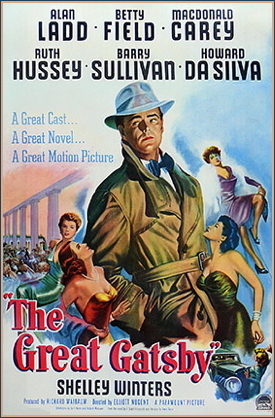
For starters, I have mixed feelings about Alan Ladd, who plays the lead in this version. He’s so pretty, it’s kind of hard to take him seriously.
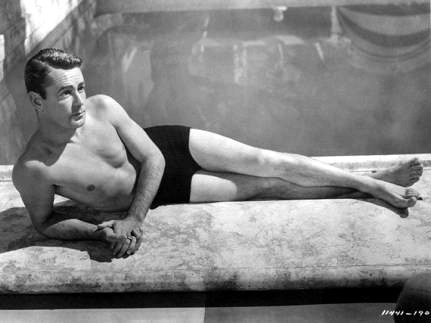
Plus, I tend to (probably unfairly) associate him with the bad baseball script in Sunset Boulevard. But I had to throw all that out and try to keep an open mind. I’m glad I did.
Host Eddie Muller compared Ladd in this role to Bogart in In A Lonely Place, explaining how the story of Jay Gatsby reflects Ladd’s own background as a dirt-poor, malnourished Okie kid who worked his way up from nothing and became a movie star. That puts a interesting spin on it and gave more weight to what could have been a throwaway performance.
Putting aside the “Noir or Not” debate, this version of Gatsby is an interesting piece of film history that has been mostly forgotten in favor of the more popular 70s version. Even though it’s set in the 1920s, there’s an undeniably 40’s sensibility to this film. It features a lot of familiar Noir City faces, like Elisha Cook Jr, Barry Sullivan, Howard da Silva and Shelly Winters. It’s got all the extramarital sex, obsession, violence and murder that Noir Hounds crave. So much so, in fact, that it was a battle to get the film past censors who objected to it's “low moral tone.”
“Low moral tone?” Count me in.
This isn’t a great movie. Some of the dialog is pretty leaden and unconvincing and it contains what may be the worst special effect of all time, but it’s dark and bleak and has a downbeat Noir ending. I was pretty impressed with the surprisingly gory (for the time) bare-chested bullet wound. I loved the saucy Ruth Hussey as Daisy’s sexually-liberated best friend and her funny, flirtatious banter with Sullivan was one of the highlights of the film. I also loved the rich old yacht captain egging Gatsby on to try to nail his sexy young trophy wife, knowing that his money would keep her faithful.
Is it Noir? I think so. Is it worth seeing? Definitely.
Of course, there’s no question about the second film on last night’s double bill. It doesn’t get much more Noir than This Gun For Hire.
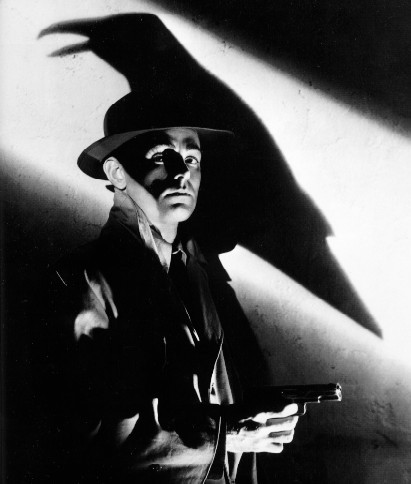
Google Film Noir images, and one of the first things you’ll see will probably be this iconic photo of Ladd as hit man Phillip Raven. But This Gun For Hire has never been screened in 14 years of Noir City. Thankfully, that inexplicable oversight was corrected last night.
It had been ages since I’d seen this film and never on the big screen. I’d forgotten how kinky it is.
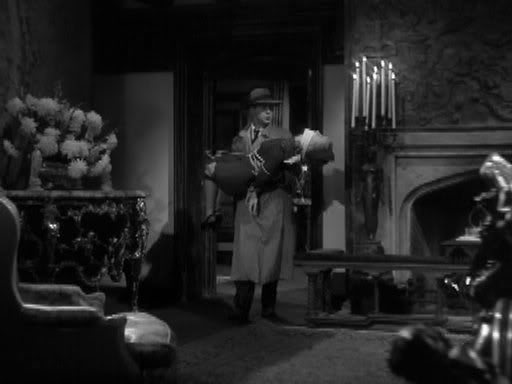
Bondage! Cross-dressing! Gas masks! Veronica Lake doing a fishing-themed nightclub number in a sexy black raincoat and thigh-high boots! This one is a must see for perverts and Noir Hounds alike.
Lake plays a magician who gets mixed up with an unscrupulous chemical company executive and the hit man he double-crossed. This movie was Ladd’s break out role, and it’s easy to see why. He’s mesmerizing, stone cold and beautiful, yet at times touchingly vulnerable. I’m not a huge fan, but this may be my favorite of all his films.
I also love Veronica Lake in this film. Her character Ellen Graham is not just eye candy. She’s smart, independent and brave. Despite being bound and gagged, she never comes off as a helpless damsel in distress. When kidnapped, she secretly leaves clever clues to help the police follow her. She challenges convention and takes risks for what she believes is right. She’s a rare bird in Film Noir, a strong female who is not a villainess.
Even though Lake is engaged to a nice-guy cop and stays faithful to him throughout the film, her chemistry with Ladd is so powerful that it seems like there’s no one else in the world when they’re on screen together. It’s hardly surprising that the pair went on to make Film Noir classics The Glass Key and The Blue Dahlia.
This film is available on DVD, so pick up a copy and play along at home. You won’t be sorry.
The Great Gatsby. Yes, really.

For starters, I have mixed feelings about Alan Ladd, who plays the lead in this version. He’s so pretty, it’s kind of hard to take him seriously.

Plus, I tend to (probably unfairly) associate him with the bad baseball script in Sunset Boulevard. But I had to throw all that out and try to keep an open mind. I’m glad I did.
Host Eddie Muller compared Ladd in this role to Bogart in In A Lonely Place, explaining how the story of Jay Gatsby reflects Ladd’s own background as a dirt-poor, malnourished Okie kid who worked his way up from nothing and became a movie star. That puts a interesting spin on it and gave more weight to what could have been a throwaway performance.
Putting aside the “Noir or Not” debate, this version of Gatsby is an interesting piece of film history that has been mostly forgotten in favor of the more popular 70s version. Even though it’s set in the 1920s, there’s an undeniably 40’s sensibility to this film. It features a lot of familiar Noir City faces, like Elisha Cook Jr, Barry Sullivan, Howard da Silva and Shelly Winters. It’s got all the extramarital sex, obsession, violence and murder that Noir Hounds crave. So much so, in fact, that it was a battle to get the film past censors who objected to it's “low moral tone.”
“Low moral tone?” Count me in.
This isn’t a great movie. Some of the dialog is pretty leaden and unconvincing and it contains what may be the worst special effect of all time, but it’s dark and bleak and has a downbeat Noir ending. I was pretty impressed with the surprisingly gory (for the time) bare-chested bullet wound. I loved the saucy Ruth Hussey as Daisy’s sexually-liberated best friend and her funny, flirtatious banter with Sullivan was one of the highlights of the film. I also loved the rich old yacht captain egging Gatsby on to try to nail his sexy young trophy wife, knowing that his money would keep her faithful.
Is it Noir? I think so. Is it worth seeing? Definitely.
Of course, there’s no question about the second film on last night’s double bill. It doesn’t get much more Noir than This Gun For Hire.

Google Film Noir images, and one of the first things you’ll see will probably be this iconic photo of Ladd as hit man Phillip Raven. But This Gun For Hire has never been screened in 14 years of Noir City. Thankfully, that inexplicable oversight was corrected last night.
It had been ages since I’d seen this film and never on the big screen. I’d forgotten how kinky it is.

Bondage! Cross-dressing! Gas masks! Veronica Lake doing a fishing-themed nightclub number in a sexy black raincoat and thigh-high boots! This one is a must see for perverts and Noir Hounds alike.
Lake plays a magician who gets mixed up with an unscrupulous chemical company executive and the hit man he double-crossed. This movie was Ladd’s break out role, and it’s easy to see why. He’s mesmerizing, stone cold and beautiful, yet at times touchingly vulnerable. I’m not a huge fan, but this may be my favorite of all his films.
I also love Veronica Lake in this film. Her character Ellen Graham is not just eye candy. She’s smart, independent and brave. Despite being bound and gagged, she never comes off as a helpless damsel in distress. When kidnapped, she secretly leaves clever clues to help the police follow her. She challenges convention and takes risks for what she believes is right. She’s a rare bird in Film Noir, a strong female who is not a villainess.
Even though Lake is engaged to a nice-guy cop and stays faithful to him throughout the film, her chemistry with Ladd is so powerful that it seems like there’s no one else in the world when they’re on screen together. It’s hardly surprising that the pair went on to make Film Noir classics The Glass Key and The Blue Dahlia.
This film is available on DVD, so pick up a copy and play along at home. You won’t be sorry.
Published on April 21, 2012 13:43
March 26, 2012
The Haul (no legs)
Several readers have asked about my haul from the paperback show. Here you go:

(Sorry, no legs in this photo.)
I wound up with a mix of beater reading copies and nicer stuff, several of which were gifts. Since the glare obscured some titles, here's a list.
THE BRAT by Gil Brewer
FRIGID WIFE By Orrie Hitt (Bold!)
A DAME IN HIS CORNER by Robert N. Owen
A PLOT FOR MURDER by Fredric Brown
TWENTY PLUS TWO by Frank Gruber
LOVELY AND LETHAL by Frank Castle
NIGHT SQUAD by David Goodis
THEY DON'T DANCE MUCH by James Ross
MURDER ME FOR NICKLES by Peter Rabe
THE BEST FROM MANHUNT with a story by Richard S. Prather, among others
THIEVES' MARKET by A. I. Bezzerides

(Sorry, no legs in this photo.)
I wound up with a mix of beater reading copies and nicer stuff, several of which were gifts. Since the glare obscured some titles, here's a list.
THE BRAT by Gil Brewer
FRIGID WIFE By Orrie Hitt (Bold!)
A DAME IN HIS CORNER by Robert N. Owen
A PLOT FOR MURDER by Fredric Brown
TWENTY PLUS TWO by Frank Gruber
LOVELY AND LETHAL by Frank Castle
NIGHT SQUAD by David Goodis
THEY DON'T DANCE MUCH by James Ross
MURDER ME FOR NICKLES by Peter Rabe
THE BEST FROM MANHUNT with a story by Richard S. Prather, among others
THIEVES' MARKET by A. I. Bezzerides
Published on March 26, 2012 15:26
You talkin' to me?
Check out this article in the Wall Street Journal this weekend about vintage Hardboiled novels. I'll wait...
Plenty of excellent suggestions for your reading list, but I have issues with the author's claim that "...the genre used to be a lot more interesting."
Not to take away from the classics, but I can't imagine anyone who has read Ray Banks, Megan Abbott, Cathi Unsworth or Frank Bill would say something like that.
Also, I can't help but feel like the snarky little barb about "a wisecracking private eye who is an icy femme fatale" is directed at me, though clearly no one who's actually read my novels would refer to them that way. I certainly can't think of very many other modern books that fit that description. Can you?
Bottom line, tons of formulaic crap got published back then, just like now. And there are a few authors who rise above the sea of crap, just like now.
Thoughts?
Plenty of excellent suggestions for your reading list, but I have issues with the author's claim that "...the genre used to be a lot more interesting."
Not to take away from the classics, but I can't imagine anyone who has read Ray Banks, Megan Abbott, Cathi Unsworth or Frank Bill would say something like that.
Also, I can't help but feel like the snarky little barb about "a wisecracking private eye who is an icy femme fatale" is directed at me, though clearly no one who's actually read my novels would refer to them that way. I certainly can't think of very many other modern books that fit that description. Can you?
Bottom line, tons of formulaic crap got published back then, just like now. And there are a few authors who rise above the sea of crap, just like now.
Thoughts?
Published on March 26, 2012 10:13
Christa Faust's Blog
- Christa Faust's profile
- 395 followers
Christa Faust isn't a Goodreads Author
(yet),
but they
do have a blog,
so here are some recent posts imported from
their feed.



